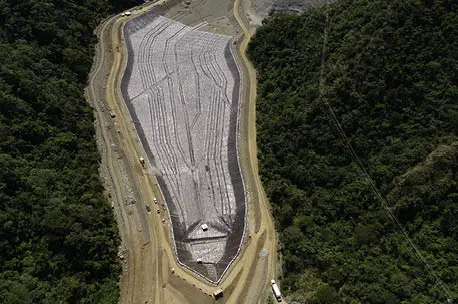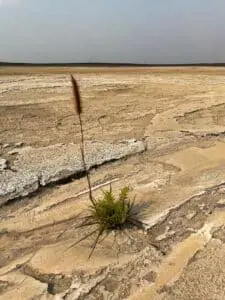Thomson found Australian TSFs have a combined capacity of five billion cubic metres.
“Our country has a very large amount of waste stored at TSFs, of which about four-fifths are active facilities. Some Australian TSFs were constructed decades ago,” she said.
Thomson said Australia compares strongly in international comparison on TSFs.
“Our mining industry has benefited from high TSF design standards and monitoring,” she said.
“Also, our TSFs are typically in remote areas that pose less risk to surrounding communities, compared to many TSFs overseas.”
Thomson holds concern for public disclosures related to GISTM’s decision to classify TSFs through “consequence” of a potential failure rather than “risk”. She used an analogy in the property industry to describe the differences.
“The risk of a large building in a CBD falling down might be infinitesimal. But the consequence of that building falling over could be hundreds of deaths and significant damage to the environment through dust and other waste pollution,” she said.
In mining, the danger is stakeholders focus on the headline consequences of potential TSF failures – and overlook the minute risk of that failure occurring.
“Even the slightest risk of TSF failure must be rigorously analysed, reported on carefully and addressed on an ongoing basis,” Thomson said. “But we don’t want a situation where opponents of mining immediately pick up on extreme potential consequences of TSF failure and use it in campaigns to stop projects. We need a balanced assessment that considers the risk of TSF failure against its consequences.”
Thomson said care is needed in how mining companies report TSF information and how audit results are published. Principle 15 of the Standard requires companies to publicly disclose and provide information on a TSF to support public accountability.
“Additional data on TSF performance has long-term benefits for a range of mining stakeholders,” she said. “But it would be counterproductive if that data was used to scare communities where the risk of TSF failure in Australia is very low.”
Ten tips for best practice in conforming with GISTM
1. Start early: Conformance with GISTM is a multi-year project. Even Tailings Storage Facilities (TSFs) that are not classified as having ‘extreme’ or ‘very high’ potential consequences – the vast majority in Australia – have just over two years to conform with the Standard.
2. Engage the board: Directors should ask management for information on the company’s approach to the Standard and for regular updates. Boards should be alerted to any delays or the identification of significant conformance gaps.
3. External support: Larger mining companies typically use in-house resources to manage conformance against the Standard. Smaller companies might use external consultant firms that have extensive experience in TSFs and understand the Standard.
4. Form multidisciplinary teams: The Standard cuts across TSF design, construction and operation; mine closure planning and implementation; environmental engineering, community engagement; investor relations and corporate affairs. Ensure the company’s team addressing the Standard has wide-ranging skills.
5. Develop an action plan: Mining companies that are well-advanced on conforming to the Standard will recognise any compliance gaps and have a plan to address them. The goal should be to eliminate those gaps before the TSF audit.
6. Make appointments: The Standard requires mining companies to appoint an engineer of record for the TSF and have an accountable executive. An external auditor to test conformance also needs to be appointed.
7. Develop required reports: For example, the Standard requires a periodic dam safety review carried out by an independent qualified review engineer. A documented dam breach analysis for the tailings facility is also required.
8. Plan for ongoing work: It is expected that mining companies will have their TSF conformance regularly audited. GISTM conformance, reporting and communication will become a normal part of business for many mining companies.
9. Follow audit developments: It is not currently clear how the audit process will work or how, and when and where audit information will be published. Companies should ensure they are up-to-date with the latest announcements on how audits will be conducted – and how information from those audits must be delivered.
10. Communicate with stakeholders: Regular communication on this issue is vital. Consider how the company informs stakeholders, such as investors, on its progress with conformance to the Standards, any gaps identified and the operational response.


